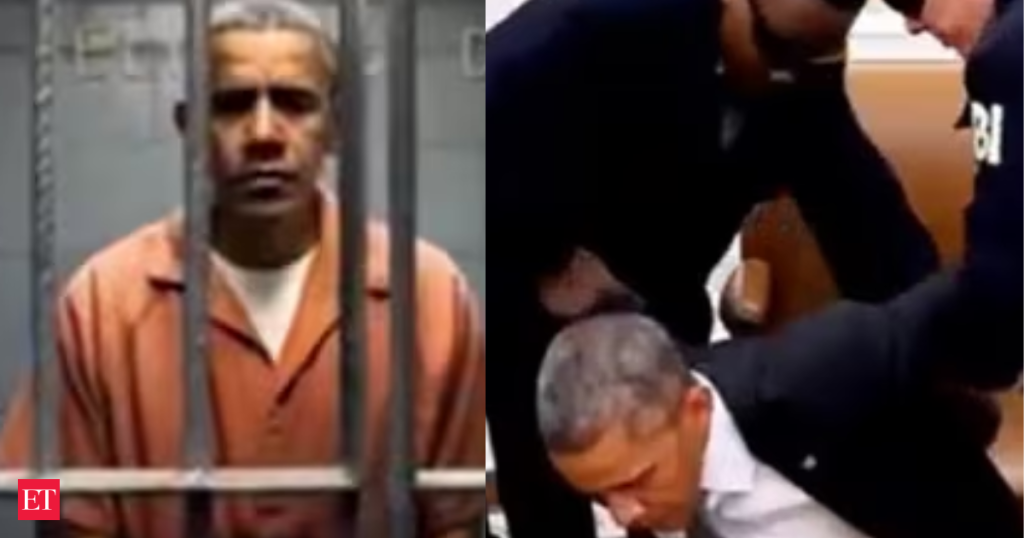Trump Shares AI-Generated Video of Obama’s Arrest, Sparking Disinformation Debate
Former President Donald Trump reignited a fiery political controversy on Monday by sharing a deepfake video depicting the arrest of former President Barack Obama. The video, posted on Trump’s Truth Social platform, portrays FBI agents apprehending Obama in the Oval Office and subsequently incarcerating him. This action follows accusations leveled by former congresswoman Tulsi Gabbard against Obama-era officials, alleging a “treasonous conspiracy” during the 2016 election. The dissemination of this fabricated video has intensified concerns about the escalating use of deepfakes in political discourse and the potential for such manipulated media to fuel disinformation and erode public trust.
The AI-generated video opens with authentic footage of Obama stating “especially the President is above the law,” juxtaposed with clips of other Democratic figures, including President Biden, Hillary Clinton, and Vice President Kamala Harris, asserting that “no one is above the law.” The video then abruptly transitions into a fabricated sequence depicting Obama’s arrest. This jarring shift from reality to manipulated imagery highlights the deceptive nature of deepfakes and the potential for such content to mislead viewers.
The release of the video followed Gabbard’s recent criminal referral to the Department of Justice, accusing Obama-era officials of manipulating intelligence assessments to create a false narrative of Russian interference in the 2016 election. Gabbard claims these actions were intended to undermine the will of the American people and subvert the electoral process. Trump amplified these allegations, praising Gabbard’s findings as “irrefutable proof” and labeling Obama the “ringleader” of what he termed the “crime of the century.”
During a press conference on Tuesday, Trump doubled down on his accusations, directly implicating Obama and other officials in an alleged treasonous plot. He declared, “If you read the papers, Obama started it. He orchestrated it… This was treason,” adding, “Barack Hussein Obama… Guilty. It’s not a question anymore.” Trump also claimed that thousands of additional documents would soon be released to support his claims, although no such evidence has been presented to date. Legal experts have confirmed that no formal charges have been filed against Obama, nor has the DOJ confirmed any active investigation into the former president.
The dissemination of the deepfake video sparked widespread public debate and prompted swift condemnation from media watchdogs and disinformation analysts. The video quickly went viral, with “Arrest Obama” trending on X (formerly Twitter), illustrating the rapid spread of manipulated content and its potential to influence public discourse. Experts warn that such deepfakes pose a serious threat to democratic stability by eroding public trust and distorting political narratives. Nina Jankowicz, a disinformation analyst and former executive director of the US Disinformation Governance Board, characterized the video as “political disinformation at its worst,” emphasizing its capacity to damage reputations and destabilize democratic processes.
While social media platforms like Meta, X, and YouTube have committed to flagging or removing synthetic content that misleads voters, enforcement remains inconsistent. The viral spread of the Obama arrest video underscores the challenges in combating the proliferation of deepfakes and the urgent need for effective strategies to mitigate their impact on political discourse. Despite Trump’s assertions, no charges have been brought against Barack Obama, and the material cited by Gabbard has not undergone public or legal scrutiny. The controversy surrounding this deepfake video highlights the critical need for media literacy and the importance of verifying information from credible sources in the face of escalating disinformation campaigns.


